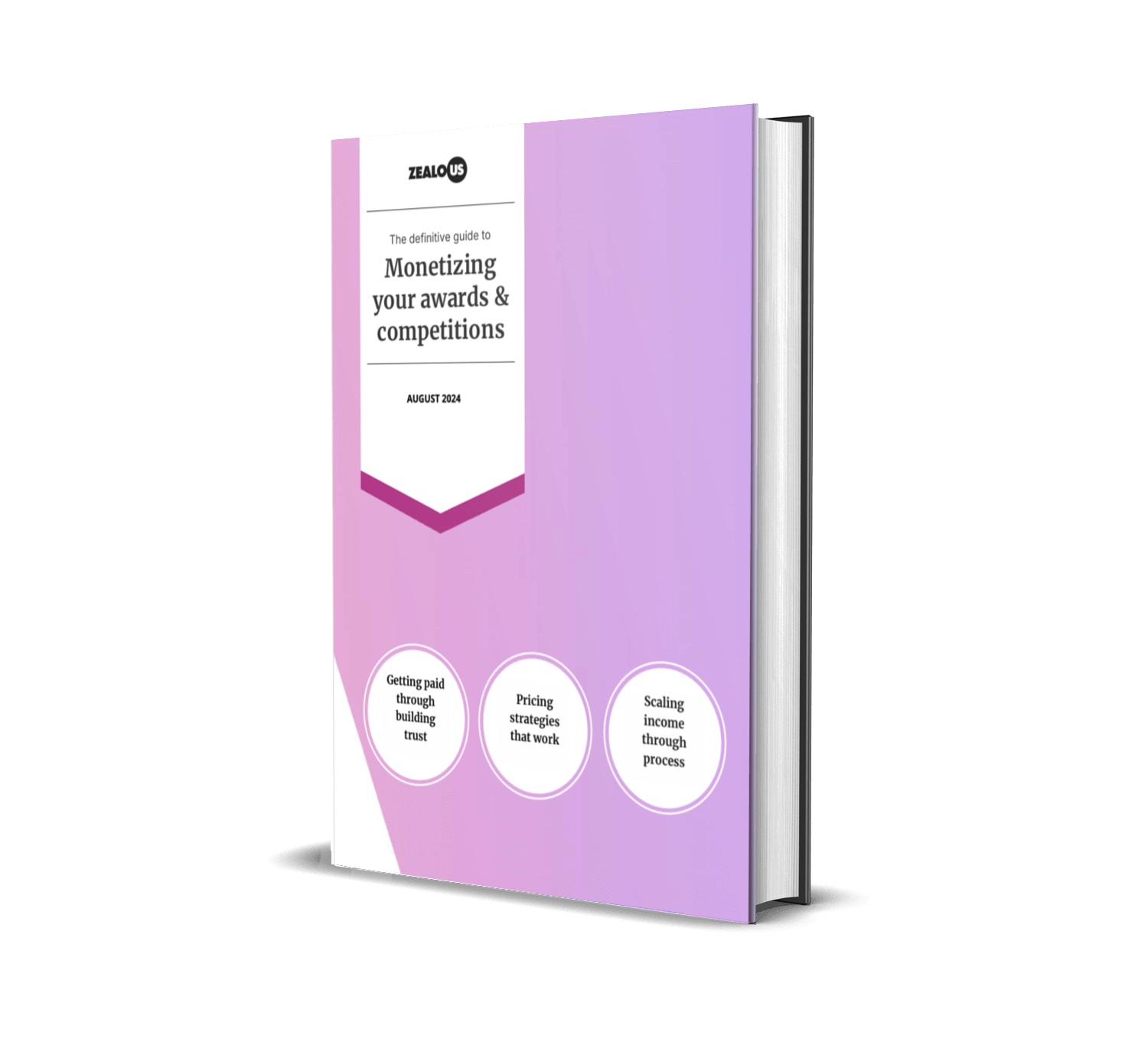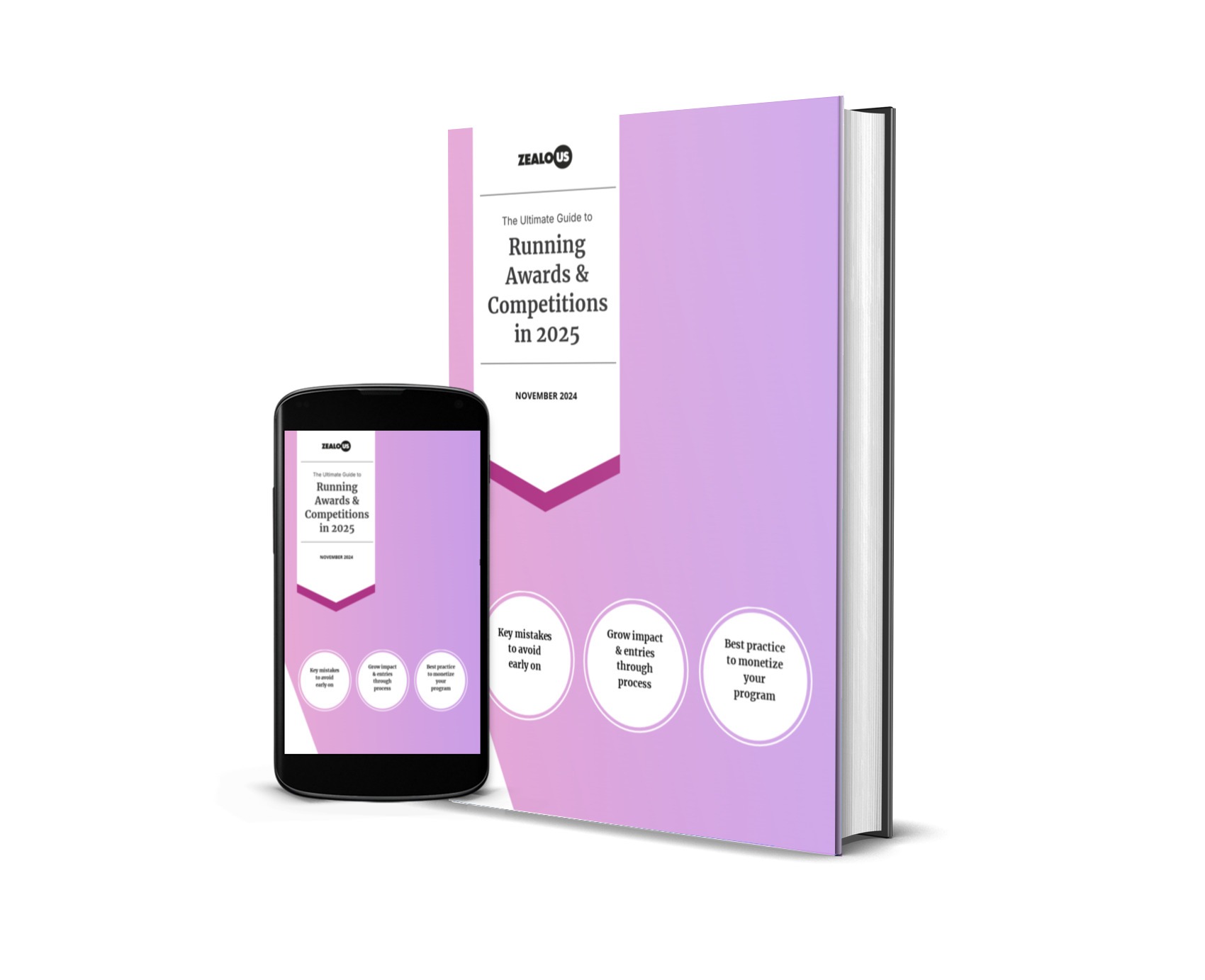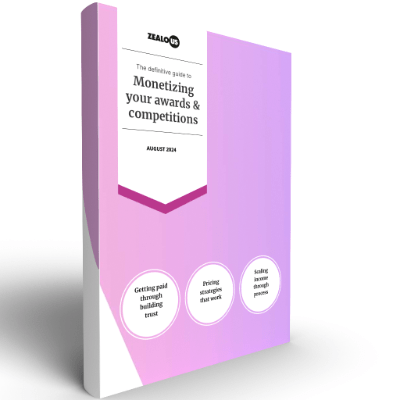This article focuses primarily on open calls — but many of the strategies and lessons here can also be applied to creative grants, prizes, and awards. Wherever you’re coming from, this is your toolkit for recovery and growth.
In this article, we’ll walk you through:
- How to define success for your open call
- How to evaluate what actually went wrong (with checklists and frameworks)
- What actions to take if your creative programme failed
- How to future-proof your next open call
- You’ll find a free Post-Mortem Template just below – but we recommend reading the full article to get the most out of it. The template is designed to help you reflect on what went wrong, identify key insights, and map out clear, actionable steps for improving your next creative programme.
Run a Better
Open Call Next Time
Turn open call lessons into clear next steps—Use our
ready-made review doc to improve your next programme.

If your programme failed, then what does success look like?
How to determine if your programme fails begins with the understanding of what ‘success’ is meant to look like for you. Too often, we adopt someone else’s metrics—entry numbers, likes, press coverage—without connecting them to our actual mission.
Before labelling your open call a failure, ask yourself these questions:
- What was I actually aiming for?
- How am I measuring success?
You should use your SMART goals as a reference to determine if your Programme worked successfully or not.
Evaluating SMART Goals for Your Open Call
Before evaluating success—or failure—you need to have defined it from the beginning with SMART goals. Strong goals make sure you’re defining your success on clarity, direction, and focus. The SMART framework ensures your goals are:
- Specific – What exactly were you trying to achieve?
- Measurable – How did you track your progress?
- Achievable – Was this goal realistic with your resources?
- Relevant – Does it align with your organisation’s mission?
- Time-bound – Was the goal achieved in the specific time frame?
SMART Goal Template for Open Calls
Here’s a framework of some smart goals that you might have used for inspiration to measure against.
| Goal Area | SMART Goal Example | Why It Matters |
|---|---|---|
| Entry Numbers | Get [X] number of eligible entries from artists by [deadline] through multi-channel marketing. | Helps demonstrate reach and value to sponsors or press. |
| Talent Discovery | Select [X] emerging creatives working in [discipline] from [region] to develop in [residency/exhibition] by [delivery date]. | Aligns with inclusion or regional development mission. |
| Funding Milestone | Fulfil grant requirement to support [X] number of artists with [£Y] each by [delivery date]. | Proves accountability to funders. |
| Audience Engagement | Reach [X] impressions and [Y] engagement on open call posts across social platforms within [campaign period]. | Demonstrates visibility and public interest. |
| Representation | Ensure [X%] of applicants identify from underrepresented backgrounds (data collected via form questions). | Drives equity goals and supports inclusive programming. |
Reflect on Each Stage of the process
Don’t just ask “what went wrong?” – ask “what can we learn?”
Here’s a ready-to-use structure for a compassionate, effective open call review. Use this Post-Mortem Framework in a document, spreadsheet, or your next group meeting to review the programme. Ideally do this within 2 weeks of your programme ending while it’s fresh.
Tip: Add your own questions in each section relevant to your specific programme goals and structure.
1. Planning (Pre-Launch)
This is where your foundations are laid. Review your goal-setting, team alignment, timelines, marketing strategy, and resource planning.
| Question | Example Answer | Mitigation | Action |
|---|---|---|---|
| Did we define our goals and what success would look like for us? | We only focused on entry numbers initially. | Reframed mid-way to include engagement metrics and qualitative feedback. | Use the SMART goals framework and Defining Your Purpose before planning next open call. Document goals clearly. |
| Did we have a clear marketing strategy plan before the open call launch? | We had a social media strategy, but lacked a partner distribution strategy because we were in a rush to launch. | We built the partner strategy slowly during the open call period. | Create a lead time checklist and partner outreach plan including contact list and press pack ready at least 2 weeks before launch. |
| Did we plan our timelines effectively? | We didn’t realise the judging period overlapped with a public holiday. | Added a last minute extension. | Use a calendar template with blackout dates for future planning. Circulate to all stakeholders early. |
| Was our budget and funding obligation clearly outlined and included in our plan? | The funder required an extra report we forgot to factor in. | Scrambled to collect needed data at the end. | Create a funding checklist template. Include funder obligations in the planning phase. |
| Did we allocate clear roles and responsibilities within the team? | We had a small team and missed some emails and tasks. | Tried to share the workload ad-hoc. | Use a shared task board to track responsibilities. |
Self prompts:
- Were there any key questions or assumptions we didn’t ask early enough?
- What other goals did we forget to factor in?
2. Open Call Period (Live Submissions)
This covers the moment the open call goes live until submissions close. Review your communications, applicant experience, and entry visibility.
| Question | Example Answer | Mitigation | Action For Next Time |
|---|---|---|---|
| Was our messaging clear? | Some applicants were confused about eligibility. | Added a FAQ mid-way and clarified posts. | Share drafts with external readers or artists before launch to test if it’s clear enough. |
| Did we clearly communicate key dates and deadlines? | Yes, but many asked for extensions near the end. | Extended deadline and updated posts. | Communicate schedule reminders to applicants throughout the open call period. |
| Were support enquiries manageable? | We were overwhelmed by email enquiries. | Repeated answers manually. | Set up an FAQ section, auto-responder and Instagram highlights with key answers. |
| Was our entry form easy to complete? | A lot of people dropped off at the ‘file upload’ section. | Email a ‘how-to upload’ guide for those in draft 5 days before the deadline. | Revisit the form structure by looking at ‘Streamlining What You Ask From Candidates’. |
Self prompts:
- Which questions came up the most from applicants?
- Were there unnecessary barriers that could be removed next time?

3. Judging
This stage covers everything from assigning judges to selecting winners. Review your scoring system, communication, and clarity.
| Question | Example Answer | Mitigation | Action |
|---|---|---|---|
| Did judges understand how to use the platform? | Some struggled with the login or forgot to score. | Sent reminders and support videos. | Include a 10-min onboarding call or video tutorial. |
| Did all judges complete their scoring? | One judge dropped out last-minute. | Had to redistribute scores. | Ask judges to confirm commitment and block out judging dates in advance. Add an extra backup judge. |
| Were our scoring criteria clear and aligned with our goals? | Some scoring was inconsistent. | Adjusted during review call. | Host a calibration call at the start. Share examples of successful entries. |
| Did the judging period allow enough time? | It was squeezed due to delays in the open call period. | Pushed announcement back. | Build in buffer time. Include contingency days in the judging schedule. Use ‘Drawing Up Your Schedule’ to help plan this. |
| Was communication with judges consistent? | Some judges didn’t see key emails. | Repeated messages via WhatsApp. | Create a group communication channel to communicate important deadlines with the group. |
Self-Prompts:
- What kind of submissions did judges value most?
- Did the selection reflect the original mission?
4. Delivery & Follow-Up
This is everything after winners are selected: communication, delivery of prizes, exhibitions, publication, or feedback to applicants.
| Question | Example Answer | Mitigation | Action |
|---|---|---|---|
| Did we deliver the prize/benefit in a timely and meaningful way? | The mentorships started 2 days late. | Communicated delay to participants. | Build delivery into timeline and communicate dates upfront. |
| Did winners feel supported and celebrated? | Yes – we tagged them and celebrated them on social media. | N/A | Continue to celebrate winners, but consider sharing the shortlist too. Look at ‘Maximising Engagement’ for advice. |
| Did we close the loop with all applicants? | No comms went out to unsuccessful applicants. | Email sent out to unsuccessful applicants immediately once an applicant raised this. | Prepare a thank-you email template + resources for all applicants before the winner is announced. |
| Did we gather feedback from participants or judges? | Not yet. | Plan to send survey. | Use a template to collect anonymous feedback within 2 weeks. |
| Is there evidence of long-term impact? | One winning artist gained a new commission due to the exposure. | Captured this in a case study. | Create a form or template to gather long-term updates for impact reporting. |
Self-Prompts:
- How did people feel at the end of the process?
- What stories of success or connection can we carry forward?
5. Review & Action
This is the stage that often gets skipped, but it’s where the learning really happens. Take time to reflect as a team while it’s still fresh—then act on what you’ve learned to improve your next opportunity.
| Question | Example Answer | Mitigation | Action |
|---|---|---|---|
| Did we hold a team review within 2 weeks of project close? | Not yet. | N/A | Schedule a reflection session at the planning stage of future calls. |
| Did we analyse what worked and what didn’t? | Focused too much on what went wrong. | Include a “what worked well” section. | Use this framework to balance reflection and celebration. |
| Did we record lessons learned in a shared place? | They were scattered in emails and Slack. | N/A | Create a simple ‘Action’ doc based on the above ‘Actions’ to implement for next time. |
| Did we capture participant and judge feedback? | No, only anecdotal. | We sent follow-up emails to participants to collect this feedback. | Add surveys and testimonials collection into the close-down checklist. |
Self-Prompts:
- What should we keep doing, stop doing, and start doing?
- What would we tell another organisation running something similar?

Actionable Next Steps
You’ve reviewed everything—from planning to delivery. Now what?
If your open call wasn’t a total disaster, and your mission still matters, don’t scrap the whole thing. Use what you’ve learned to make smarter, smoother decisions next time. The first version is always the roughest—now you’ve got data, experience, and real insight to work with.
Set a Timeline for Improvement
Give your team clarity and momentum by setting a realistic schedule for improvement.
- When would you like to relaunch?
- What changes need to be made first?
- Who owns each task or decision?
Make it visual. Map it out. And start ticking things off.
Improve your tools and processes
You’ve already done the hard thinking—now put it into action.
- Revisit the “Action” column from your post-mortem review.
- Turn those into clear next steps, assign owners, and share them with your team.
- Use shared documents or task boards to keep everyone aligned.
These aren’t just fixes—they’re your blueprint for a better, smoother open call.
It Wasn’t a Failure, It Was a Prototype
Remember, most open calls aren’t perfect and it can take some time to get things right.
What matters most is how you carry what you’ve learned into your next iteration. Be honest, be proud of what you tried, and know that growth lives in the adjustments we make—not just the wins we celebrate.
Most successful programmes evolve over time. What matters is what you do next. Keep the stories, the impact, and the effort in mind—and carry this forward with pride.
Let us know you want us to write more content like this with a love!
Share









